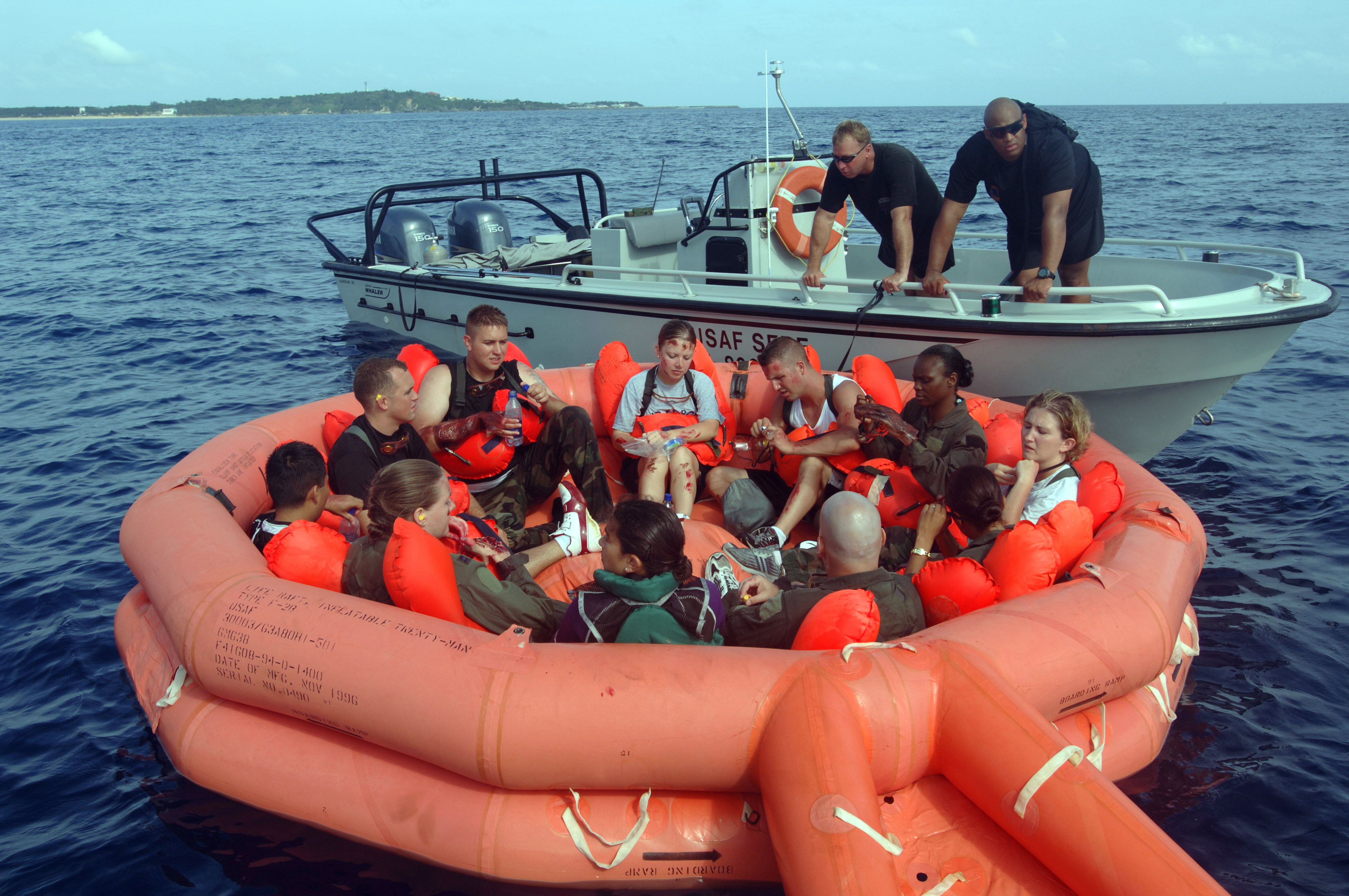|
Rule Of Threes (survival)
In survival, the rule of threes involves the priorities in order to survive. The rule, depending on the place where one lives, may allow people to effectively prepare for emergencies and determine decision-making in case of injury or danger posed by the environment. Rule Normally, the rule of threes contains the following: * You can survive three ''minutes'' without breathable air (unconsciousness), or in icy water. * You can survive three ''hours'' in a harsh environment (extreme heat or cold). You need shelter! * You can survive three ''weeks'' without food. But, many people have gone for over 40 days during fasting and have survived. * You can survive three ''days'' without drinkable water. Each line assumes that the one(s) before it are met. For example, if you have a large quantity of food and water but are exposed to the environment, then the harsh conditions rule applies. The rule may sometimes be useful in determining the order of priority when in a life-threatening si ... [...More Info...] [...Related Items...] OR: [Wikipedia] [Google] [Baidu] |
Life Raft
A lifeboat or liferaft is a small, rigid or inflatable boat carried for emergency evacuation in the event of a disaster aboard a ship. Lifeboat drills are required by law on larger commercial ships. Rafts ( liferafts) are also used. In the military, a lifeboat may double as a whaleboat, dinghy, or gig. The ship's tenders of cruise ships often double as lifeboats. Recreational sailors usually carry inflatable liferafts, though a few prefer small proactive lifeboats that are harder to sink and can be sailed to safety. Inflatable lifeboats may be equipped with auto-inflation (carbon dioxide or nitrogen) canisters or mechanical pumps. A quick release and pressure release mechanism is fitted on ships so that the canister or pump automatically inflates the lifeboat, and the lifeboat breaks free of the sinking vessel. Commercial aircraft are also required to carry auto-inflating liferafts in case of an emergency water landing; offshore oil platforms also have liferafts. Ship-laun ... [...More Info...] [...Related Items...] OR: [Wikipedia] [Google] [Baidu] |
Survival Skills
Survival skills are techniques used to sustain life in any type of natural environment or built environment. These techniques are meant to provide basic necessities for human life, including water, food, and shelter. Survival skills also support proper knowledge and interactions with animals and plants to promote the sustaining of life over time. Survival skills are basic ideas and abilities that ancient people invented and passed down for thousands of years. Today, survival skills are often associated with surviving in a disaster situation. Outdoor activities such as hiking, backpacking, horseback riding, fishing, and hunting all require basic wilderness survival skills, especially to handle emergencies. Individuals who practice survival skills as a type of outdoor recreation or hobby may describe themselves as survivalists. Survival skills are often used by people living off-grid lifestyles such as homesteaders. Bushcraft and primitive living are most often self-imp ... [...More Info...] [...Related Items...] OR: [Wikipedia] [Google] [Baidu] |
Unconsciousness
Unconsciousness is a state in which a living individual exhibits a complete, or near-complete, inability to maintain an awareness of self and environment or to respond to any human or environmental stimulus. Unconsciousness may occur as the result of traumatic brain injury, brain hypoxia (inadequate oxygen, possibly due to a brain infarction or cardiac arrest), severe intoxication with drugs that depress the activity of the central nervous system (e.g., alcohol and other hypnotic or sedative drugs), severe fatigue, pain, anaesthesia, and other causes. Loss of consciousness should not be confused with the notion of the psychoanalytic unconscious, cognitive processes that take place outside awareness (e.g., implicit cognition), and with altered states of consciousness such as sleep, delirium, hypnosis, and other altered states in which the person responds to stimuli, including trance and psychedelic experiences. Causes This is not a complete list. Cardiovascular sys ... [...More Info...] [...Related Items...] OR: [Wikipedia] [Google] [Baidu] |
Rule Of Thumb
In English language, English, the phrase ''rule of thumb'' refers to an approximate method for doing something, based on practical experience rather than theory. This usage of the phrase can be traced back to the 17th century and has been associated with various Trade (occupation), trades where quantities were measured by comparison to the width or length of a thumb. An erroneous folk etymology began circulating in the 1970s falsely connecting the origins of the phrase "rule of thumb" to legal doctrine on Domestic violence, domestic abuse. The error appeared in a number of law journals, and the United States Commission on Civil Rights published a report on domestic abuse titled "Under the Rule of Thumb" in 1982. Some efforts were made to discourage the phrase, which was seen as taboo owing to this false origin. During the 1990s, several authors correctly identified the spurious folk etymology; however, the connection to domestic violence was still being cited in some legal sources ... [...More Info...] [...Related Items...] OR: [Wikipedia] [Google] [Baidu] |
Room Temperature
Room temperature, colloquially, denotes the range of air temperatures most people find comfortable indoors while dressed in typical clothing. Comfortable temperatures can be extended beyond this range depending on humidity, air circulation, and other factors. In certain fields, like science and engineering, and within a particular context, room temperature can mean different agreed-upon ranges. In contrast, ambient temperature is the actual temperature, as measured by a thermometer, of the air (or other medium and surroundings) in any particular place. The ambient temperature (e.g. an unheated room in winter) may be very different from an ideal ''room temperature''. Food and beverages may be served at "room temperature", meaning neither heated nor cooled. Comfort temperatures Comfort temperature is interchangeable with neutral temperature in the scientific literature, which can be calculated through regression analysis between thermal sensation votes and indoor temperature. ... [...More Info...] [...Related Items...] OR: [Wikipedia] [Google] [Baidu] |
Dehydration
In physiology, dehydration is a lack of total body water that disrupts metabolic processes. It occurs when free water loss exceeds intake, often resulting from excessive sweating, health conditions, or inadequate consumption of water. Mild dehydration can also be caused by immersion diuresis, which may increase risk of decompression sickness in divers. Most people can tolerate a 3-4% decrease in total body water without difficulty or adverse health effects. A 5-8% decrease can cause fatigue and dizziness. Loss of over 10% of total body water can cause physical and mental deterioration, accompanied by severe thirst. Death occurs with a 15 and 25% loss of body water.Ashcroft F, Life Without Water in Life at the Extremes. Berkeley and Los Angeles, 2000, 134-138. Mild dehydration usually resolves with oral rehydration, but severe cases may need intravenous fluids. Dehydration can cause hypernatremia (high levels of sodium ions in the blood). This is distinct from hypovolemia ... [...More Info...] [...Related Items...] OR: [Wikipedia] [Google] [Baidu] |
Heat Stroke
Heat stroke or heatstroke, also known as sun-stroke, is a severe heat illness that results in a body temperature greater than , along with red skin, headache, dizziness, and confusion. Sweating is generally present in exertional heatstroke, but not in classic heatstroke. The start of heat stroke can be sudden or gradual. Heatstroke is a life-threatening condition due to the potential for multi-organ dysfunction, with typical complications including seizures, rhabdomyolysis, or kidney failure. Heat stroke occurs because of high external temperatures and/or physical exertion. It usually occurs under preventable prolonged exposure to extreme environmental or exertional heat. However, certain health conditions can increase the risk of heat stroke, and patients, especially children, with certain genetic predispositions are vulnerable to heatstroke under relatively mild conditions. Preventive measures include drinking sufficient fluids and avoiding excessive heat. Treatme ... [...More Info...] [...Related Items...] OR: [Wikipedia] [Google] [Baidu] |
Terminal Dehydration
Terminal dehydration is dehydration to the point of death. Some scholars make a distinction between "terminal dehydration" and "termination by dehydration". Courts in the United StatesNL Cantor (1987). Legal frontiers of death and dying. Indiana University Press. , pp. 28-29. generally do not recognize prisoners as having a right to die by voluntary dehydration, since they view it as suicide. Progression During terminal dehydration, the usual symptoms of dehydration, such as headache and leg cramps, can occur. Unlike many other suicide methods, it cannot be accomplished impulsively. However, a "point of no return" can eventually be reached at which, should it be desired to abort the terminal dehydration, rehydration cannot be accomplished through simple oral rehydration therapy; rather, it will require medical assistance such as intravenous therapy. Those who die by terminal dehydration typically lapse into unconsciousness before death, and may also experience delirium and altered ... [...More Info...] [...Related Items...] OR: [Wikipedia] [Google] [Baidu] |





